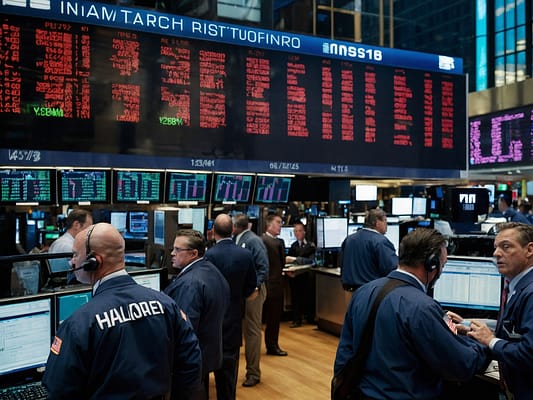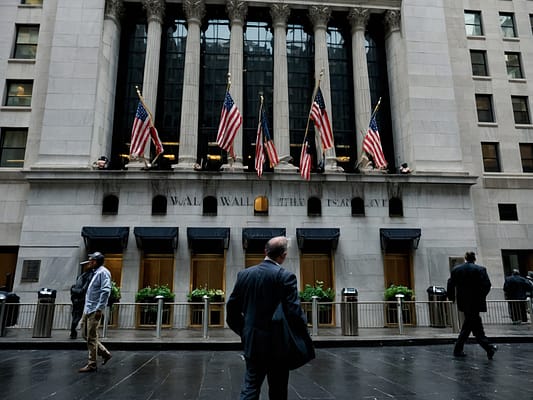Blood on the Street 🩸 Navigating Opportunities in America’s Stock Markets
In the world of investing, few phrases are as provocative as “blood on the street.” It evokes images of market panic, steep sell-offs, and chaos—but for many seasoned investors, these moments can also signal unique buying opportunities. In this blog, we’ll dive into the anatomy of the American stock markets, explore what “blood on the street” really means, and discuss how to position yourself for potential gains when others are gripped by fear.
Understanding the American Stock Market Landscape
The U.S. stock markets are a dynamic, complex ecosystem shaped by decades of history, policy changes, and evolving investor psychology. From the bustling trading floors of the New York Stock Exchange to the fast-paced world of electronic markets, the American system is built on transparency, regulation, and innovation. Key characteristics include:
- Market Liquidity: The U.S. stock markets are among the most liquid in the world. This liquidity not only allows for rapid price adjustments but also means that large volumes of shares can change hands in a very short period.
- Diverse Participants: Investors range from large institutional players with billions in assets to individual retail traders who are now more connected than ever through online platforms.
- Regulatory Oversight: Organizations like the Securities and Exchange Commission (SEC) ensure that market practices maintain a level of fairness and transparency, even during times of extreme volatility.
These factors make the U.S. stock markets both resilient and susceptible to dramatic swings—especially during economic downturns or periods of widespread uncertainty.
When the Market Cries: “Blood on the Street”
The phrase “blood on the street” is more than a metaphor; it’s a descriptor for a market in distress. When investors talk about this condition, they’re referring to times when fear, uncertainty, and panic drive asset prices to dangerously low levels. Some common triggers include:
- Economic Recessions: A downturn in economic indicators—rising unemployment, falling GDP, and tightening credit conditions—can set off a chain reaction among investors.
- Financial Crises: Systemic issues, such as the subprime mortgage crisis of 2008, can lead to cascading failures in financial institutions and a subsequent market collapse.
- Geopolitical Tensions: Wars, political instability, or unexpected international events can lead to rapid sell-offs as global uncertainty mounts.
- Technological Disruptions: In our increasingly digital age, algorithmic trading and high-frequency trading can sometimes exacerbate market declines, turning a bad day into a full-blown crisis.
During these times, the “blood” represents not only falling stock prices but also the emotional state of the market—a mix of despair and resignation that often leads to irrational decision-making.
Buying Amidst the Chaos
For the contrarian investor, market panic isn’t just a moment of crisis—it’s a signal that opportunity is ripe. The adage “be greedy when others are fearful” encapsulates the contrarian mindset. Here’s why many investors choose to buy when the market seems to be bleeding:
- Valuation Opportunities: During market downturns, even fundamentally strong companies can see their stock prices drop far below intrinsic values. This mispricing offers an opportunity to purchase quality stocks at a discount.
- Market Overreaction: Human psychology plays a major role in market dynamics. Often, the initial sell-off is driven more by emotion than by fundamentals, creating a temporary disconnect between a company’s real worth and its market price.
- Long-Term Growth: Investors with a long-term horizon understand that market cycles are inevitable. By buying during times of crisis, they position themselves to benefit from the eventual recovery.
- Portfolio Diversification: Adding assets during market downturns can improve the overall risk profile of a portfolio. As the market recovers, diversified holdings can lead to substantial gains.
The notion of “blood on the street” is a wake-up call: when panic sells off assets indiscriminately, it often leaves behind hidden gems for those who are willing to look beyond the short-term chaos.
















Market Crises and Recovery
History is replete with examples where market crashes paved the way for massive recoveries. A few key moments include:
- The Great Depression (1929): The stock market crash of 1929 led to a decade-long economic downturn. However, the recovery that followed eventually laid the foundation for modern economic policies and financial regulations.
- Black Monday (1987): On October 19, 1987, global stock markets experienced a sudden and severe crash. While the immediate aftermath was grim, the long-term market recovery reaffirmed the resilience of investor markets.
- The Dot-Com Bubble (2000-2002): Overvaluation and speculative frenzy led to a dramatic market decline in tech stocks. Savvy investors who focused on fundamentally sound companies were rewarded when the market eventually stabilized.
- The 2008 Financial Crisis: Triggered by the collapse of the housing market and the failure of major financial institutions, the 2008 crisis sent shockwaves around the world. Today, many of the companies that were once deemed “too big to fail” have recovered, and new opportunities emerged in sectors that were resilient or innovated in the aftermath.
Each of these crises illustrates a recurring theme: panic creates dislocation, and dislocation creates opportunity. For many investors, the key is to maintain discipline, rely on fundamental analysis, and not get swayed by the herd mentality.
Strategies for Investing When “Blood Is on the Street”
For those considering buying in a market crisis, here are some strategies to help navigate the volatility:
1. Focus on Fundamentals
Before buying any stock, analyze its underlying business performance. Look at earnings, cash flow, competitive positioning, and management quality. Companies with strong fundamentals are more likely to weather economic storms.
2. Dollar-Cost Averaging
Instead of trying to time the bottom perfectly, consider investing a fixed amount at regular intervals. This strategy helps mitigate the risk of investing a lump sum right before a further downturn.
3. Diversification is Key
Don’t put all your capital into one sector or stock. Spread your investments across different industries and asset classes to reduce risk. In turbulent times, diversification can be a lifesaver.
4. Keep Emotions in Check
Market downturns are emotional. Fear and greed can cloud judgment, leading to impulsive decisions. Stick to a pre-determined investment plan and avoid making reactive moves based solely on short-term market movements.
5. Look for Quality Debt
Sometimes, a crisis is not just an opportunity for equities. High-quality bonds or dividend-paying stocks can provide stability and steady income, even when the market is volatile.
6. Stay Informed
Economic indicators, policy decisions, and global events all play significant roles in market behavior. Regularly review financial news, reports, and expert analysis to make informed decisions.
The Risks Involved
While buying during a market downturn can yield high rewards, it’s essential to acknowledge the risks:
- Continued Decline: Even when buying at depressed prices, there’s no guarantee that the market won’t fall further. Always be prepared for additional volatility.
- Liquidity Concerns: In times of extreme market stress, liquidity can dry up. Ensure that you have access to sufficient funds for emergencies.
- Behavioral Biases: Overconfidence in a contrarian bet can lead to miscalculations. Stay humble and always re-assess your positions.
- Market Sentiment: Sometimes, what appears to be a buying opportunity can last longer than anticipated. Patience is crucial when waiting for a recovery.
Investors must weigh these risks against the potential rewards. A well-thought-out strategy that combines thorough research, disciplined execution, and a diversified approach can help mitigate some of these risks.
The image of “blood on the street” might seem terrifying, but for the disciplined and patient investor, it represents a moment of opportunity. History has shown that market crises, while painful, also create the conditions for future growth. By focusing on fundamentals, employing sound risk management strategies, and maintaining a contrarian mindset, investors can position themselves to buy quality stocks at attractive prices.
America’s stock markets have weathered many storms, and each downturn has eventually given way to new periods of growth. While it’s impossible to predict every twist and turn, understanding market dynamics—and being prepared to act when the opportunity arises—can make all the difference. So, if you find yourself staring at “blood on the street,” remember: sometimes the best move is to step in and buy, setting the stage for the next chapter of market recovery.



